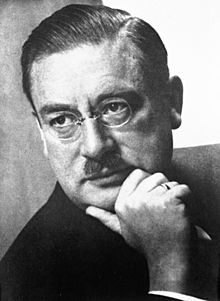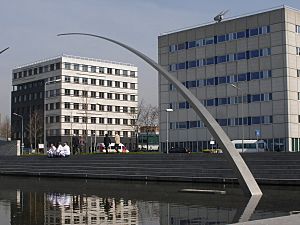Peter Debye facts for kids
Quick facts for kids
Peter Debye
|
|
|---|---|
 |
|
| Born | March 24, 1884 Maastricht, Netherlands
|
| Died | November 2, 1966 (aged 82) Ithaca, New York, USA
|
| Citizenship | Netherlands / United States |
| Alma mater | RWTH Aachen University of Munich |
| Known for | Debye model Debye relaxation Debye frequency |
| Awards | Rumford Medal (1930) Faraday Lectureship Prize (1933) Lorentz Medal (1935) Nobel Prize in Chemistry (1936) Willard Gibbs Award (1949) Max Planck Medal (1950) Priestley Medal (1963) National Medal of Science (1965) |
| Scientific career | |
| Fields | Physics, Chemistry |
| Institutions | University of Zurich (1911–12) University of Utrecht (1912–14) University of Göttingen (1914–20) ETH Zurich (1920–27) University of Leipzig (1927–34) University of Berlin (1934–39) Cornell University (1940–50) |
| Doctoral advisor | Arnold Sommerfeld |
| Doctoral students | Lars Onsager Paul Scherrer George K. Fraenkel Fritz Zwicky |
Peter Joseph William Debye (March 24, 1884 – November 2, 1966) was a brilliant scientist. He was a physicist and physical chemist from the Netherlands and later the United States. He won the Nobel Prize in Chemistry for his important work.
Contents
Biography of Peter Debye
Early Life and Education
Peter Debye was born in Maastricht, Netherlands. His birth name was Petrus Josephus Wilhelmus Debije. In 1901, he started studying at the Aachen University of Technology. He finished his first degree in electrical engineering in 1905.
One of his first published papers, in 1907, showed his skill in solving complex math problems. He studied under a famous theoretical physicist named Arnold Sommerfeld. Sommerfeld later said that Peter Debye was his most important discovery.
In 1906, Sommerfeld moved to Munich. Debye went with him as his assistant. Debye earned his Ph.D. in 1908. His research was about radiation pressure. In 1910, he found a simpler way to explain Planck's law for radiation. Even Max Planck agreed it was a better method!
Moving Around for Science
In 1911, Albert Einstein left his professor job at Prague. Peter Debye took over his old position at the University of Zurich in Switzerland.
After that, Debye moved to many different universities. He worked at Utrecht in 1912 and Göttingen in 1913. He then went to ETH Zurich in 1920 and University of Leipzig in 1927. In 1934, he moved to Berlin. There, he became the director of the Kaiser Wilhelm Institute for Physics. This institute's buildings were constructed during his time there. He won the Lorentz Medal in 1935. From 1937 to 1939, he was the president of the German Physical Society.
Family and Personal Life
Debye was very strict about scientific rules. But he was also friendly and always made time for his students. He believed in enjoying your work and finding purpose in it.
Outside of science, Debye loved to fish for trout and work in his garden. He collected cacti and was known for enjoying a good cigar.
While working in Berlin, he met Mathilde Alberer. She was the daughter of the owner of the house where he was staying. They got married in 1913. They enjoyed working in their rose garden together for many years. They had a son, Peter P. Debye (1916-2012), and a daughter, Mathilde Maria (born 1921). Their son, Peter, also became a physicist. He even worked with his father on some research.
Amazing Scientific Discoveries
Debye made many important contributions to science.
In 1912, he studied how charges are spread out in molecules. He applied the idea of dipole moments to molecules that are not perfectly balanced. He created equations that linked these dipole moments to temperature. Because of his work, the unit for molecular dipole moments is now called a debye.
Also in 1912, he improved Albert Einstein's ideas about how much heat different materials can hold. He added new ideas about low-frequency phonons. This led to the Debye model.
In 1913, he added to Niels Bohr's theory of atomic structure. He suggested that electrons could move in elliptical (oval-shaped) paths around the nucleus. Arnold Sommerfeld also had this idea.
From 1914 to 1915, Debye worked with Paul Scherrer. They figured out how temperature affects X-ray diffraction patterns in crystalline solids. This is known as the "Debye–Waller factor".
In 1923, with his assistant Erich Hückel, he improved a theory about how electricity moves through electrolyte solutions. This is called the Debye–Hückel equation. Even though it was improved later by Lars Onsager, it was a huge step forward in understanding these solutions.
Also in 1923, Debye explained the Compton effect. This is when X-rays change their frequency after hitting electrons.
Later Work and Life
From 1934 to 1939, Debye was the director of the physics section at the famous Kaiser Wilhelm Institute in Berlin. He was also a professor at the Frederick William University of Berlin. He held these jobs during a challenging period in Germany's history.
In 1939, Debye traveled to the United States to give lectures at Cornell University in Ithaca, New York. He left Germany in early 1940 and became a professor at Cornell. He led the chemistry department for 10 years. In 1946, he became an American citizen. Unlike his earlier life where he moved often, Debye stayed at Cornell for the rest of his career. He retired in 1952 but kept doing research until he passed away.
At Cornell, much of Debye's work focused on using light-scattering. This technique helped him figure out the size and weight of polymer molecules. He started this research during World War II while working on synthetic rubber. Later, he used it for proteins and other large molecules.
Peter Debye had a heart attack in April 1966. He had another one in November of that year, which was fatal. He is buried in Pleasant Grove Cemetery in Ithaca, New York.
Awards and Honors
Peter Debye received many important awards for his scientific work:
- 1930 – Rumford Medal for his work on specific heats and X-ray spectroscopy.
- 1937 – Franklin Medal from The Franklin Institute.
- 1936 – Nobel Prize in Chemistry (entry at nobelprize.org) for his studies on how molecules are built, especially his work on dipole moments and X-ray diffraction.
- 1963 – Priestley Medal.
- 1965 – National Medal of Science.
- 1982 – He was added to the Alpha Chi Sigma Hall of Fame.
Things Named After Peter Debye
Many scientific concepts and units are named after Peter Debye because of his important discoveries:
- Debye shielding – This is how electric charges are hidden by other charged particles around them in plasmas or liquids.
- Debye length – This is the typical distance needed for Debye shielding to happen.
- Debye model – A way to understand how much heat solids can hold at different temperatures.
- Debye – A unit used to measure the strength of an electric dipole moment.
- Debye frequency – A special vibration frequency in a crystal.
- Debye relaxation – How ideal dipoles react to a changing electric field.
- Debye sheath – A thin layer where plasma touches a solid surface.
- Debye–Hückel equation – A way to calculate how active particles are in solutions.
- Debye function – A math function used in heat capacity calculations.
- Debye–Scherrer method – A technique used to study crystals with X-rays.
- Debye–Waller factor – A way to measure how much disorder there is in a crystal.
- 30852 Debye – A small planet (asteroid) in space.
- Lorenz–Mie–Debye theory – A theory about how light scatters off tiny spheres.
- Debye (crater) – A crater on the far side of the Moon.
See also
 In Spanish: Peter Debye para niños
In Spanish: Peter Debye para niños


